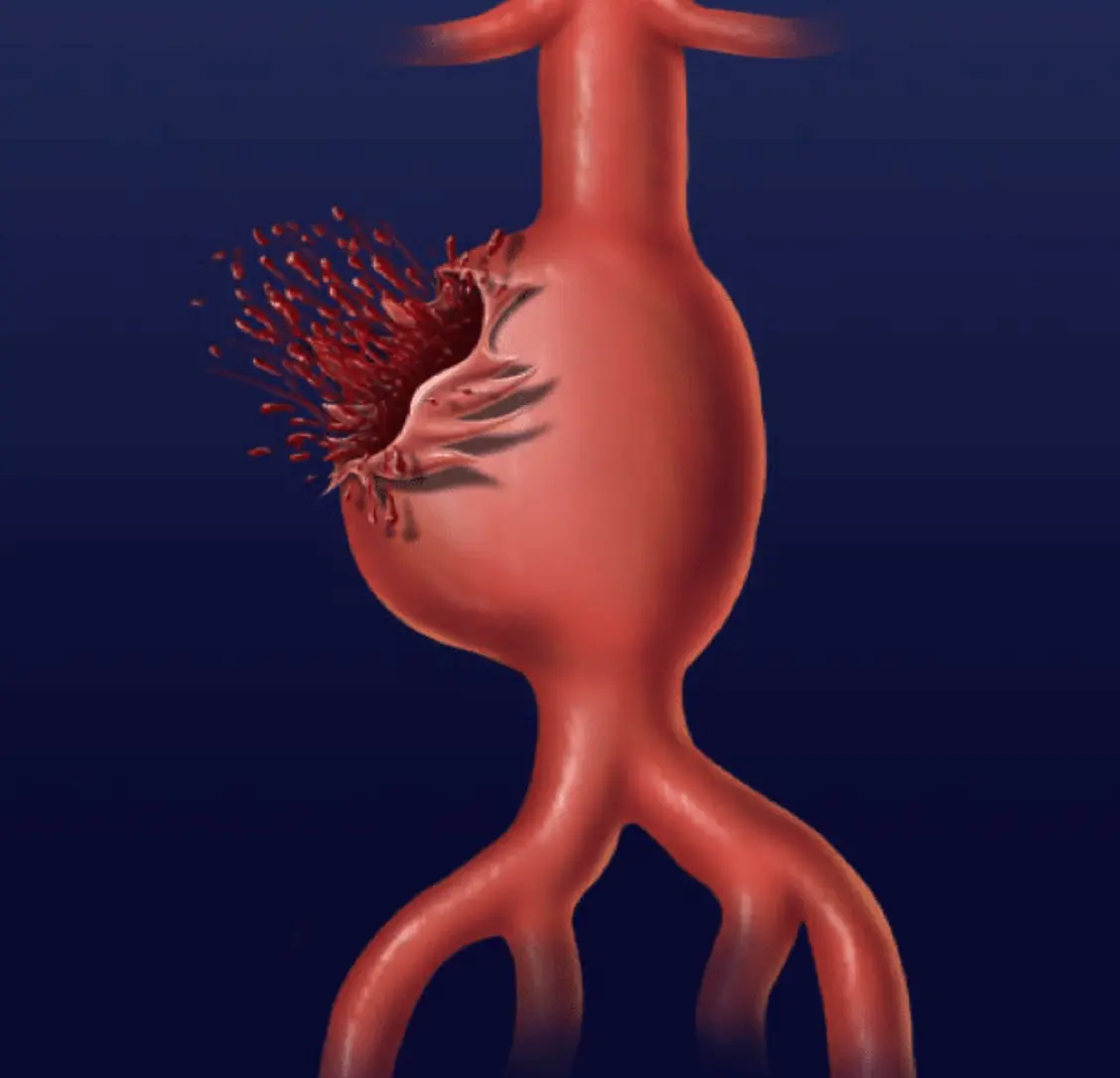Can Abdominal Aortic Aneurysm be Cured?
Maybe
Depends on the size, rate of growth, and overall health; small aneurysms may not require treatment, while larger ones may need surgery

What is Abdominal Aortic Aneurysm?
An abdominal aortic aneurysm is a bulge in the abdominal aorta, the body’s main blood vessel. Treatment may involve monitoring, medications, or surgical intervention, depending on the size and risk of rupture. Regular monitoring is crucial for assessing aneurysm size and managing potential complications.

Clinical Aspects

Characteristics
Weakening and bulging of the abdominal aorta, often asymptomatic

Symptoms
Often asymptomatic; severe cases may cause abdominal or back pain, pulsating sensation in the abdomen

Diagnosis
Imaging tests, such as ultrasound and CT scans

Prognosis
Rupture can be life-threatening; early detection improves outcomes

Complications
Rupture, leading to internal bleeding and shock
Etiology and Treatment

Causes
Atherosclerosis, high blood pressure, smoking, genetic factors

Treatments
Monitoring, lifestyle changes, medication, surgical repair

Prevention
Monitoring, lifestyle changes, medication, surgical repair
Public Health and Patient Perspectives

Epidemiology
More common in older adults, especially men; smokers and individuals with a family history are at higher risk

Patient Perspectives
Regular screening is crucial for at-risk individuals
Please note that the information provided is based on the current understanding of these conditions and treatments may vary based on individual circumstances. Always consult with a healthcare provider for accurate information.
Share: